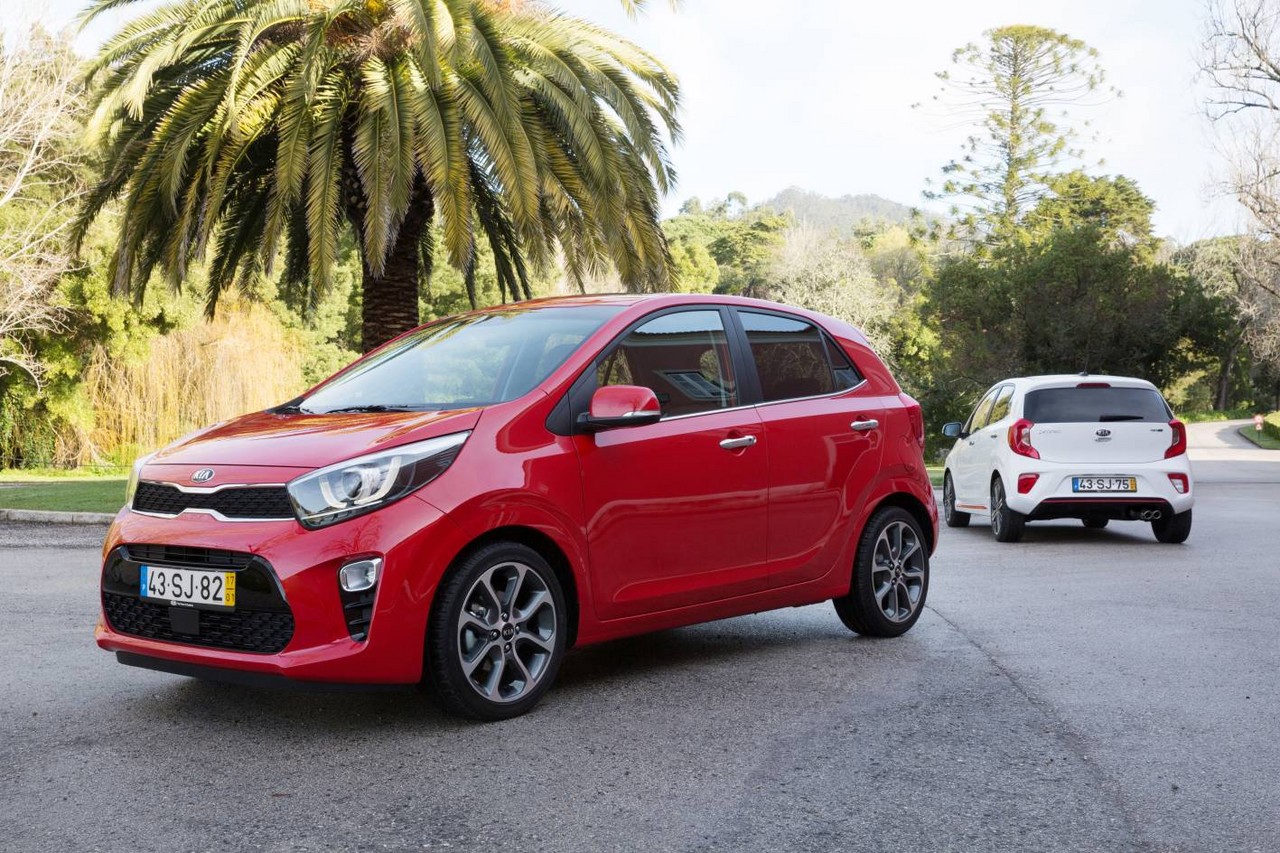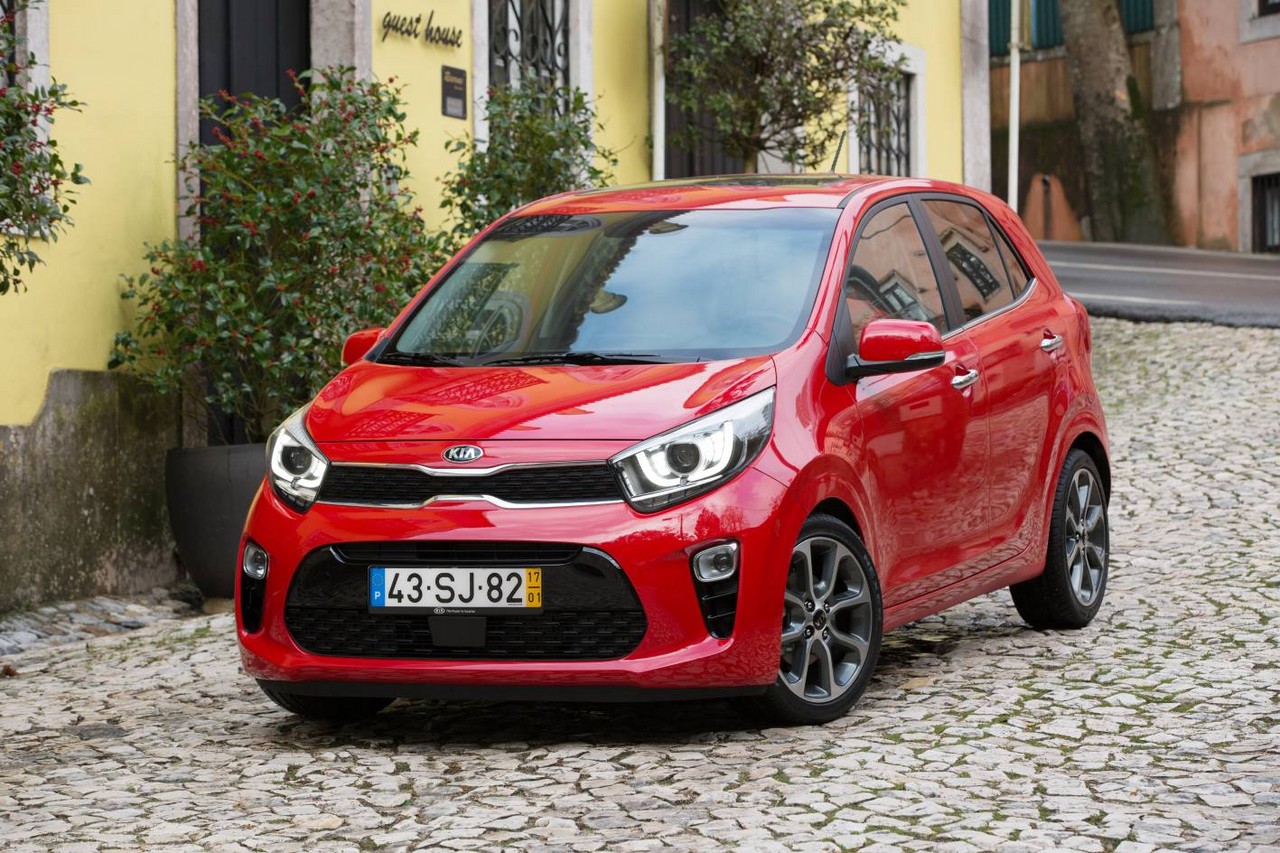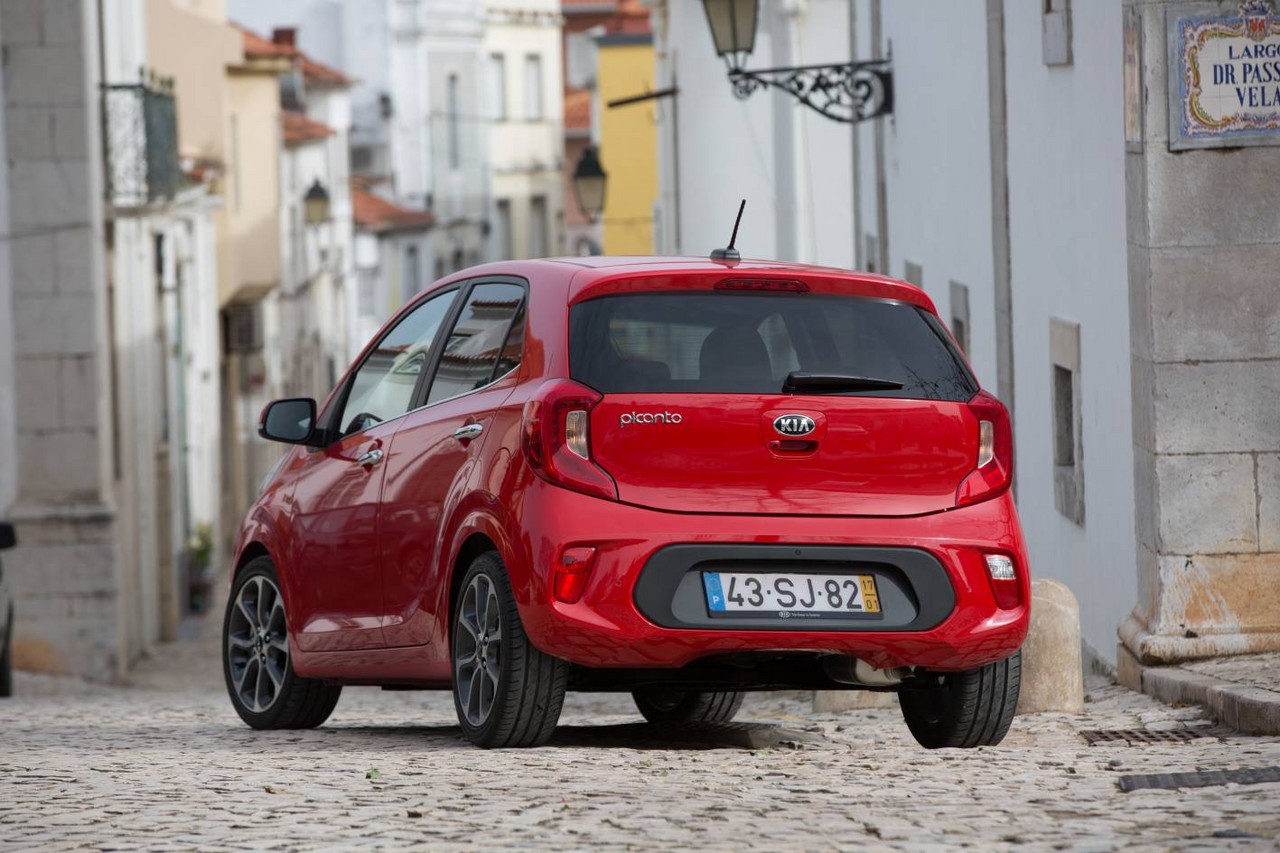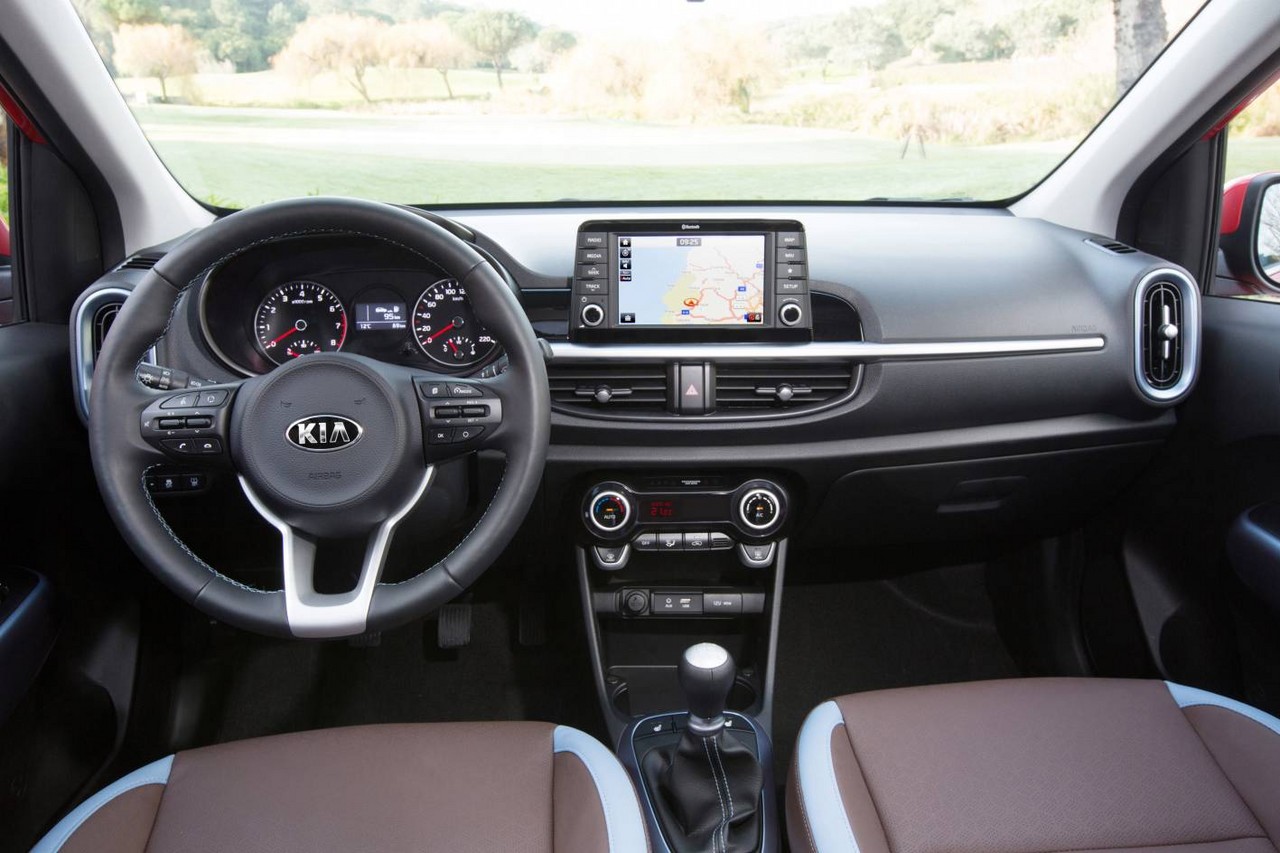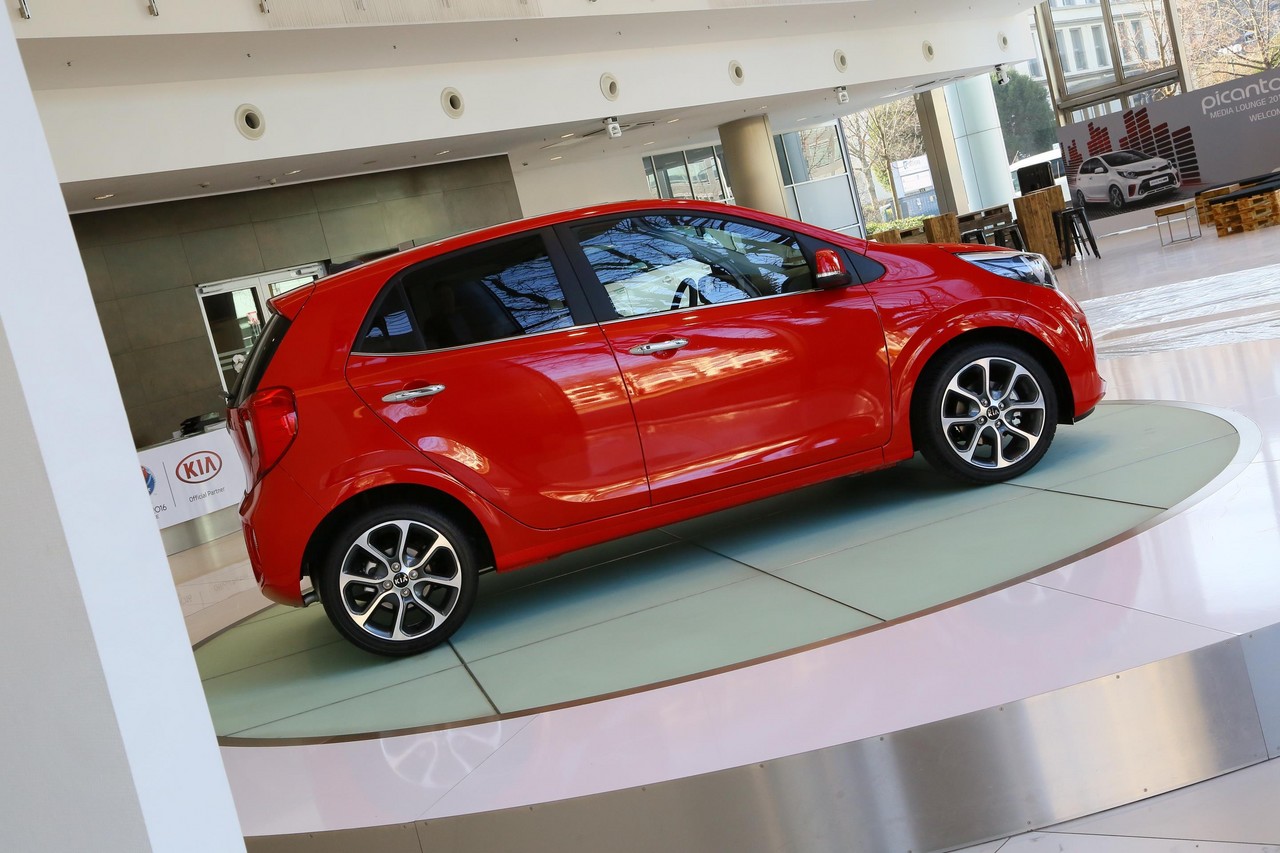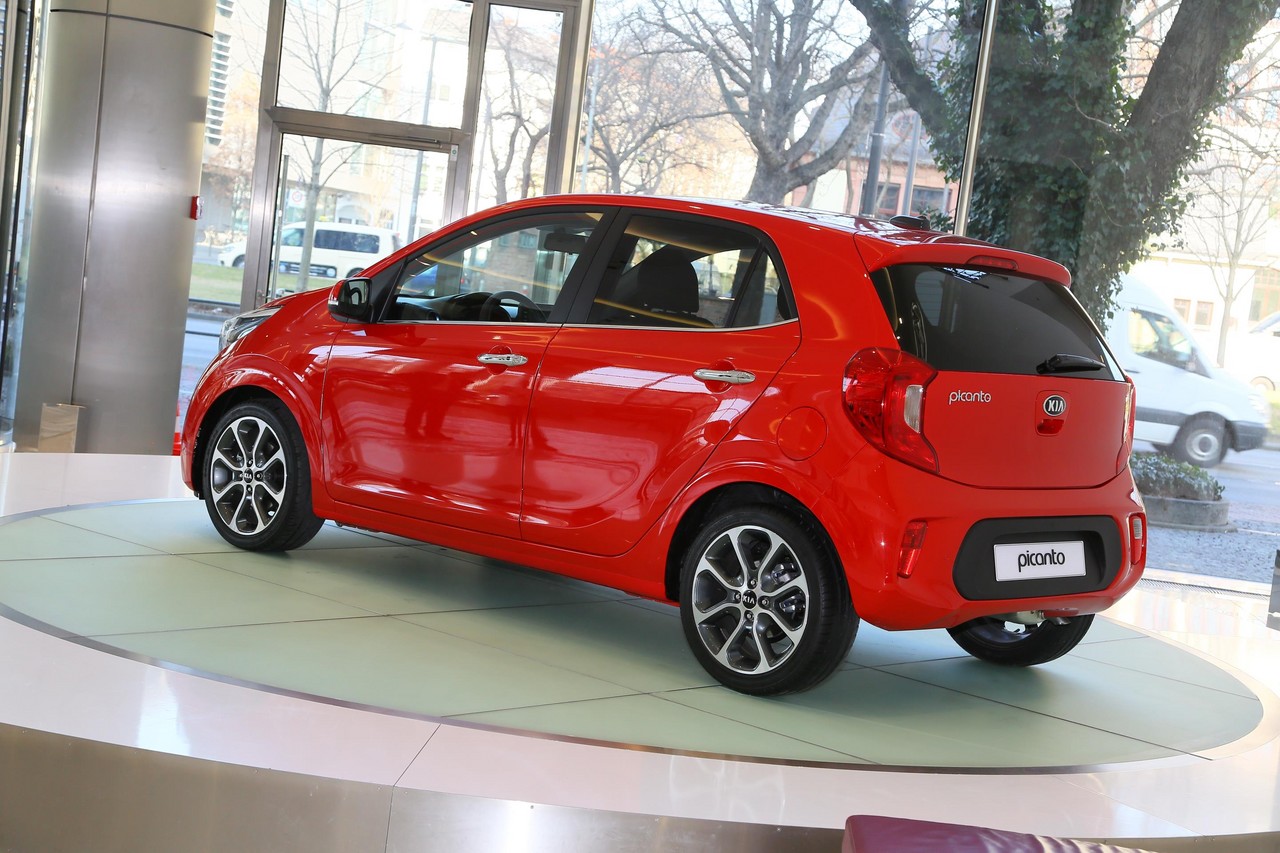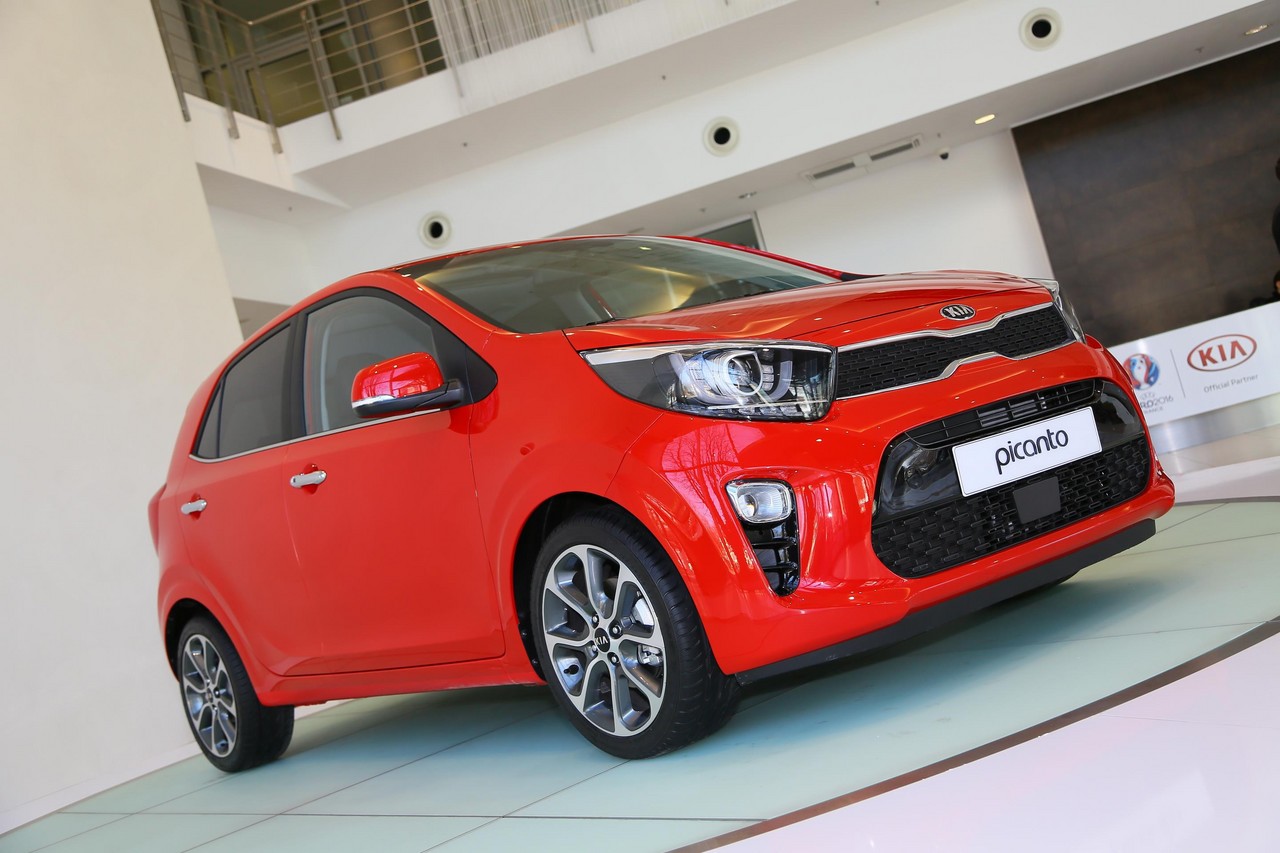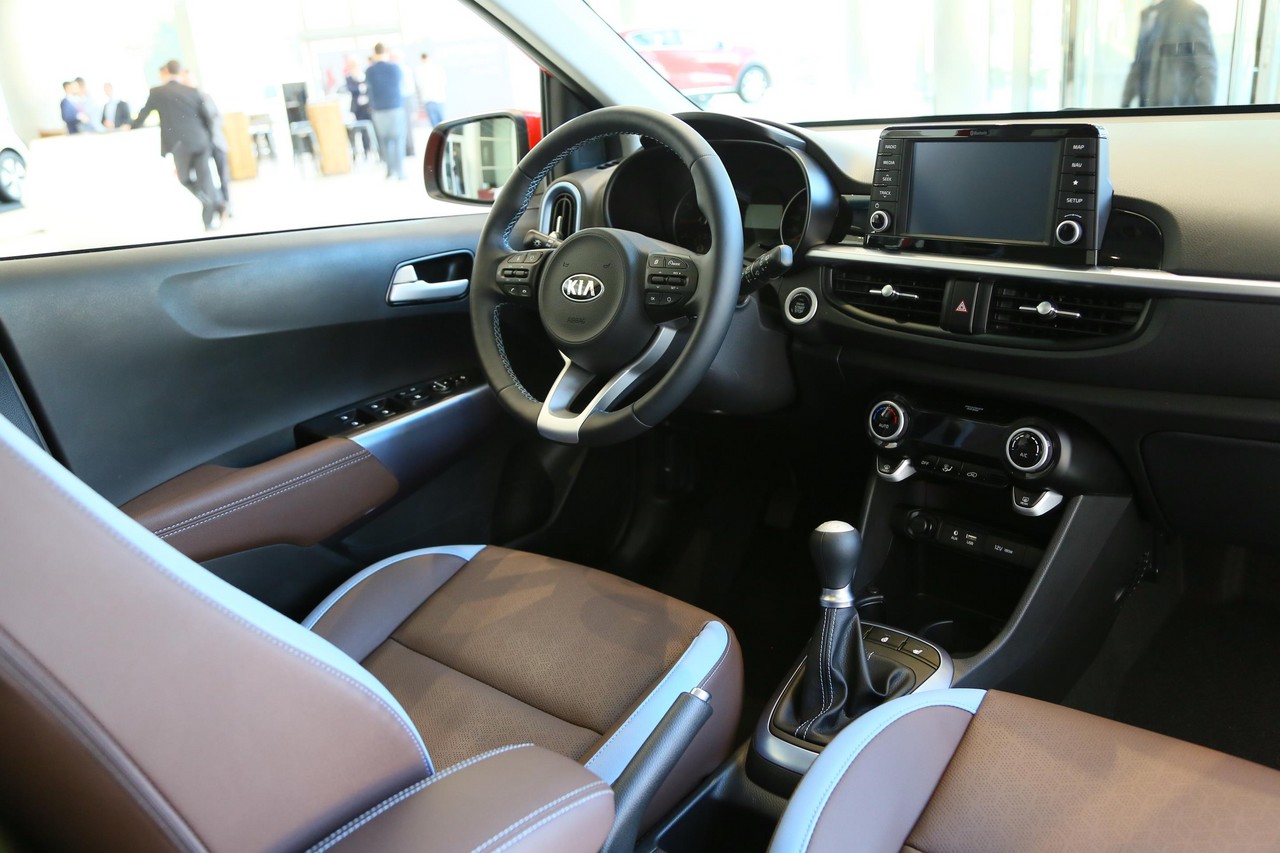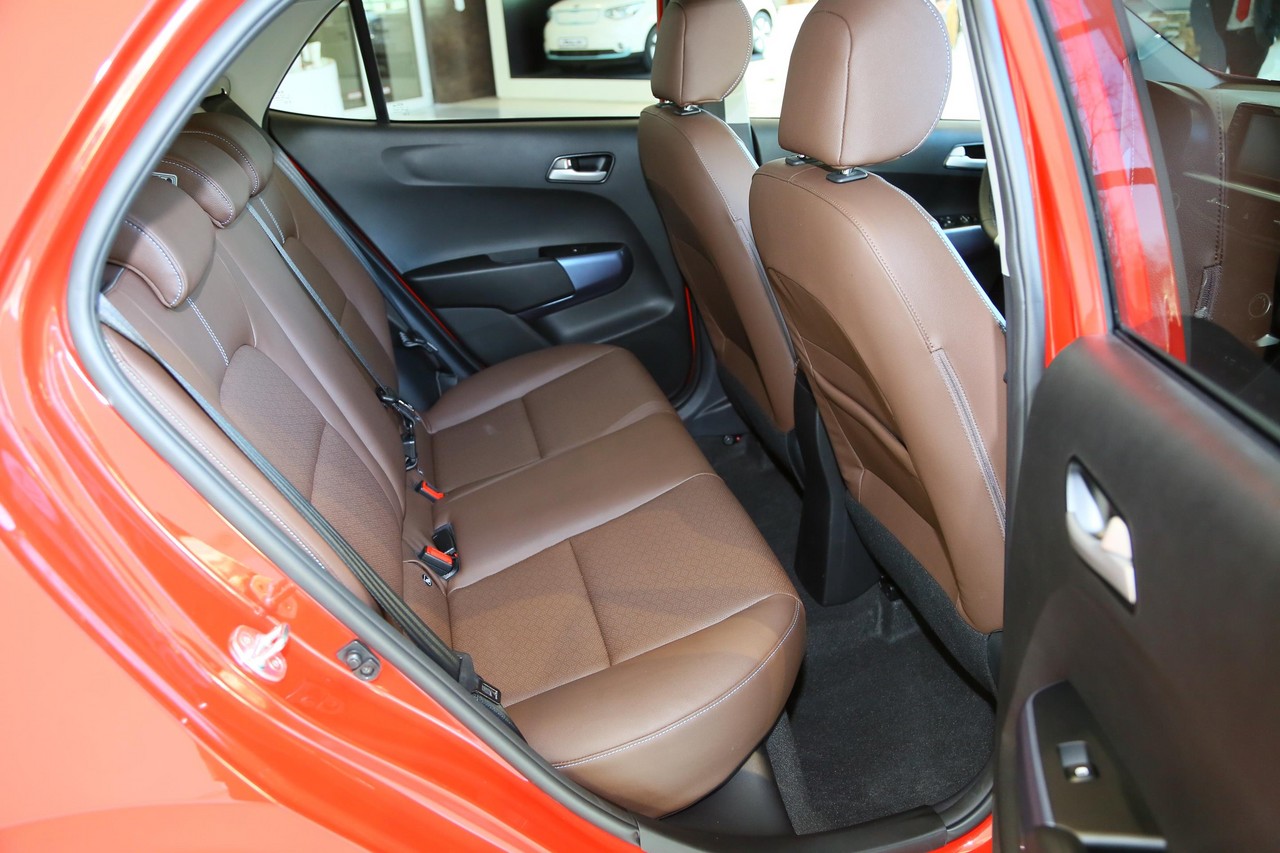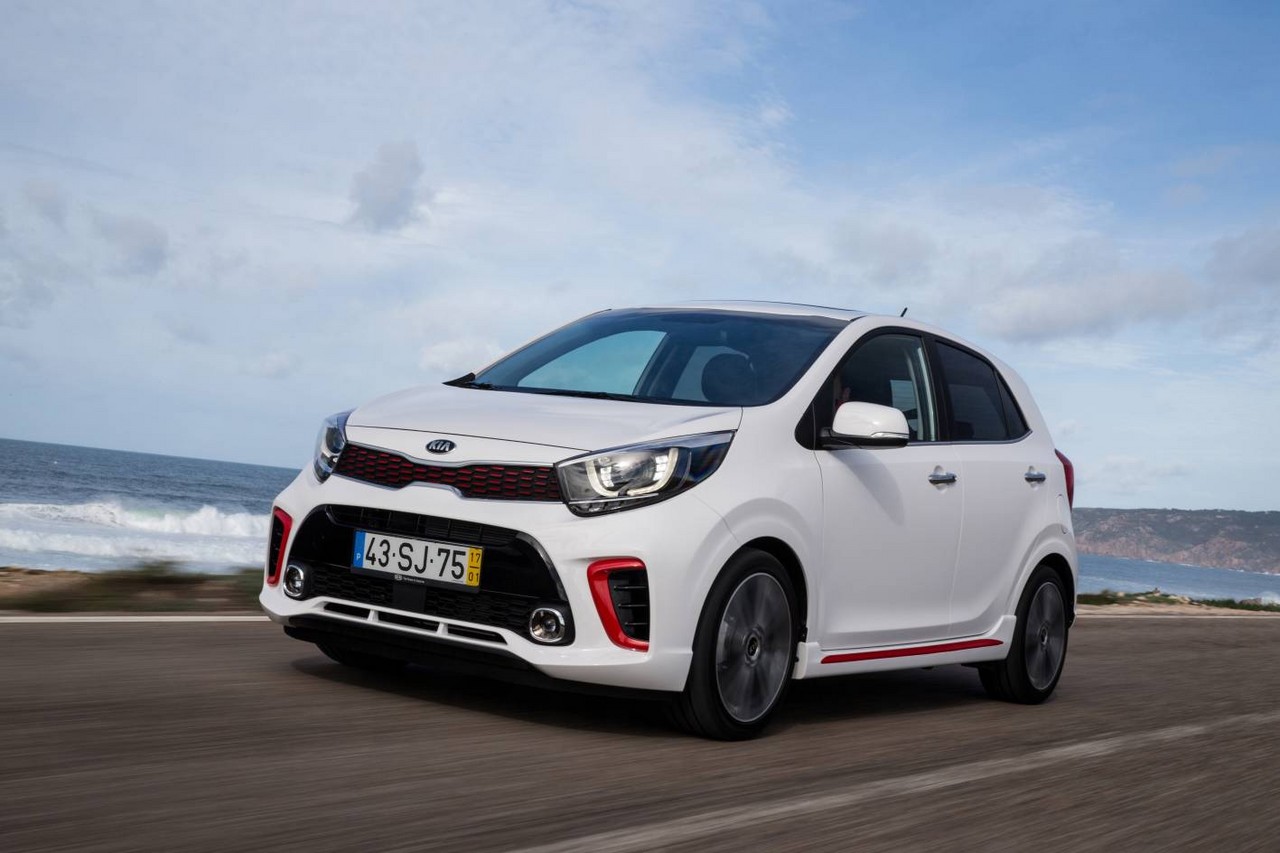
- Accomplished ride/handling balance
- Direct steering
- Quiet, well-insulated interior
- Affordable retail pricing, lots of features and seven year warranty
- 1.25-litre petrol engine is economical…
- … but coarse above 4000 rpm and limited by four-speed auto
- Autonomous Emergency Braking (AEB) not available and three star Euro NCAP safety rating
- Steering wheel lacks reach adjustment
- Poor illumination from halogen headlights
- For manual models, clutch pedal is close to footrest and reports of difficulty engaging reverse
- Hard interior plastics
- For Picanto GT-Line, suspension lacks compliance
Overview
Released in Australia in May 2017, the Kia JA Picanto was a light, five-door hatchback. Manufactured in Seosan, South Korea, the front-wheel drive Kia JA Picanto was initially powered by a 1.25-litre four-cylinder petrol engine that was mated to either a five-speed manual or four-speed automatic transmission. In April 2018, the JA Picanto range was expanded with the release of the Picanto GT-Line.
In January 2019, the Kia Picanto 1.0 Turbo GDi was released in Australia; it was available in Australian Open and GT editions.
G4LA Kappa engine
The 1248 cc G4LA four-cylinder petrol engine was a member of Hyundai-Kia’s ‘Kappa’ engine family. As such, the G4LA engine had a die-cast aluminium block with an integrated ladder-frame for stiffness, 71.0 mm bores and a 78.8 mm stroke, cast-iron cylinder liners, an offset crankshaft, an aluminium alloy cylinder head, double overhead camshafts (chain-driven), four valves per cylinder with beehive valve springs and actuated by roller cam followers, variable intake and exhaust valve timing (Kia’s D-CVVT), multi-point injection and a compression ratio of 10.5:1.
| Edition | Engine | Trans. | Peak power | Peak torque | |
|---|---|---|---|---|---|
| 1.25 MPI | S, GT-Line |
1248 cc G4LA petrol I4 | 5sp man., 4sp auto |
63 kW at 6000 rpm | 120 Nm at 4000 rpm |
| 1.0 Turbo GDi | AO Edition, GT |
998 cc G3LC turbo petrol I3 | 5sp man. | 74 kW at 4500 rpm | 172 Nm at 1500-4000 rpm |
Dimensions and body
Compared to the Kia TA Picanto which it replaced, the JA Picanto had the same length (3595 mm) and width (1595 mm), but was 5 mm taller (1485 mm) and had a 15 mm longer wheelbase (2400 mm). The JA Picanto had a luggage capacity of 255 litres (VDA method) with the rear seats in position, though this increased to 1010 litres when the rear seats were folded down and luggage was stored to the roofline.
For a stronger body, 44 per cent of the Kia JA Picanto’s bodyshell was cast in advanced high strength steels (AHSS, previously 22 per cent); this also contributed to a 12 per cent increased in tensile strength, 32 per cent increase in static torsional stiffness and a 23 kg reduction in the mass of the body-in-white. Specifically, the high strength steels were used to reinforce the floor pan, roof rails, engine bay, A- and B-pillars, and ‘core structure’. Furthermore, the JA Picanto used eight times more structural adhesive (67 metres) than the TA Picanto to reinforce joins.
The Kia JA Picanto had a tare mass of 976 kg and 995 kg with the manual and automatic transmissions, respectively.
Noise reduction measures
To reduce interior noise, the Kia JA Picanto had:
- A new soundproofing panel beneath the dashboard and in the floor of the cabin;
- Expandable sound-absorbent foam in the lower sections of the A- and B-pillars;
- A new sound-absorbent engine cover and reshaped air intake to isolate engine noise;
- A revised ‘structure’ for the engine mounts; and,
- 6 mm lower windscreen wipers to reduce wind noise.
According to Kia, the JA Picanto achieved a quietest-in-class rating of 39 dB at idle and 68 dB at ‘a steady cruise’.
Suspension
The Kia JA Picanto had MacPherson strut front suspension and a torsion beam rear axle (both with coil springs, gas-filled shock absorbers and anti-roll bars). Compared to the TA Picanto, the front anti-roll bars were 2 per cent stiffer and mounted slightly lower, while the rear anti-roll bars were 5 per cent stiffer and mounted slightly higher. Furthermore, the torsion beam rear axle was ‘reshaped’ and featured ‘newly-designed trailing arms’.
Steering
The Kia JA Picanto had rack-and-pinion steering with electric power assistance; the steering had a ratio of 14.3:1 (previously 16.5:1) and the wheel required 2.8 turns from lock to lock (down from 3.4). Furthermore, the JA Picanto had a turning circle of 9.4 metres.
Safety equipment
Standard safety equipment for the Kia Picanto included dual front airbags, front side airbags, full-length curtain airbags, ABS, electronic brake force distribution, brake assist, electronic stability control, traction control and front seatbelts with pre-tensioners and load limiters.
Euro NCAP testing
In Euro NCAP testing , the Kia JA Picanto – without fitment of the Advanced Driving Assistance Pack which included Autonomous Emergency Braking (AEB) – received a three star safety rating which included a 79 per cent adult occupant protection rating and a 64 per cent child occupant protection rating; the ‘safety assist’ rating, however, was 25 per cent. In the frontal offset test, protection of the driver’s head, neck, thighs and feet were rated as good, but lower leg protection was rated as adequate (i.e. a slight risk of serious injury) and chest protection as marginal (i.e. a moderate risk of serious injury). In the side impact and pole tests, driver protection was rated as good for all body areas.
Brakes
The Kia JA Picanto had 256 mm by 20 mm ventilated front brake discs and 234 mm by 10 mm solid rear discs.
Features: Kia JA Picanto
Standard features for the Kia JA Picanto included 14-inch steel wheels with 175/65 R14 tyres, a four speaker sound system with a seven-inch touch screen, MP3 compatibility, USB and auxiliary (3.5 mm) inputs, Bluetooth mobile phone connectivity with Android Auto and Apple CarPlay smartphone integration, air conditioning, black cloth upholstery, a six-way manually adjustable driver’s seat (including height adjustment), cruise control, halogen daytime running lights, a rear fog light, rear parking sensors, a rear view camera with parking guidelines, dusk-sensing headlights, a leather-wrapped steering wheel and gearshift lever, 60:40 split fold rear seats, remote central locking, power adjustable and heated door mirrors, power windows, tilt and telescopic steering wheel adjustment, vanity mirrors, a 12 volt power outlet, trip computer, an alarm and immobiliser.
As standard, the Kia Picanto had a space-saver spare wheel.
2018 Kia Picanto Australian Open Edition
The Kia Picanto Australian Open Edition was released in Australia in January 2018. Compared to the standard Kia Picanto, the Picanto Australian Open Edition could be identified by its 16-inch alloy wheels, LED position lamps and daytime running lights (DRLs), body kit, dual exhaust tips, contrasting body accents and ‘GT-Line’ badging. Inside, the Picanto Australian Open Edition featured a six speaker sound system, ‘premium’ seats with red accents, a ‘premium’ steering wheel and gearshift knob, and alloy sports pedals. Australian deliveries of the Kia Picanto Australian Open Edition were limited to 150 vehicles, each of which was sold with an Australian Open pack which included a Babolat racquet, a backpack and a can of Wilson tennis balls. The Kia Picanto Australian Open Edition had a drive-away price of $16,777.
Kia Picanto GT-Line
Released in Australia in April 2018, the Kia Picanto GT-Line had the same distinguishing features as the Picanto Australian Open Edition. As such, the Kia Picanto GT-Line could be identified by its 16-inch alloy wheels, LED position lamps and daytime running lights, body kit, dual exhaust tips, contrasting body accents and ‘GT-Line’ badging. Inside, the Picanto GT-Line featured a six speaker sound system, ‘premium’ seats with red accents and alloy sports pedals. Solely available with a four-speed automatic transmission, the Kia Picanto GT-Line had a drive-away price of $17,490 upon its release.
Kia Picanto X-Line Australian Open Edition
The Kia Picanto X-Line Australian Open Edition was released in Australia in November 2018. Visually, the Kia Picanto X-Line Australian Open Edition could be identified by its 16-inch alloy wheels, 15 mm raised suspension, LED position lamps with daytime running lights, LED rear combination lamps, body kit (shared with the Picanto GT-Line and consisting of front and rear diffusers, mouldings and side skirts), ‘X-Line’ and ‘AO Edition’ badging, dual exhaust tips and ‘X-Line’ body accents. Furthermore, features for the Kia Picanto X-Line Australian Open Edition were extended to include ‘premium’ seats with red accents, a ‘premium’ steering wheel and gear shift knob, alloy sports pedals and power folding door mirrors.
Kia Picanto GT
Released in January 2019, the Kia Picanto GT was similarly equipped to the Picanto GT-Line.
Specifications
